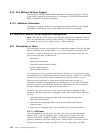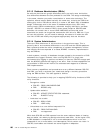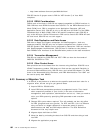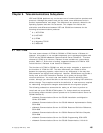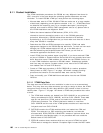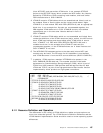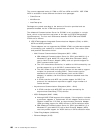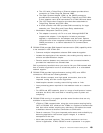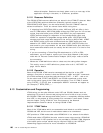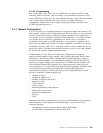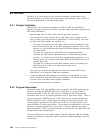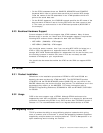9.1.1 Product Installation
The VTAM installation procedures for OS/390 are very different from those for
VSE, since this is the area where the operating system differences are most
influential. To install OS/390 VTAM you must perform the following steps:
•
Allocate data sets for VTAM. OS/390 VTAM can make use of a large number
of data sets, depending on the options selected. In 9.1.1.1, “VTAM Data Sets”
we describe the essential ones; for a complete description (including the
optional ones used for APPN, CMIP management and so on) please refer to
the
VTAM Installation and Migration Guide
.
•
Define the channel-attached VTAM devices (37XX, 3174, 3172,
channel-to-channel connections and so on) in the OS/390 generation
procedure. Alternatively, OS/390 allows these devices to be defined
dynamically to its I/O configuration but you must make sure that this is done
every time OS/390 is restarted.
•
Determine the CSA and ECSA storage to be used by VTAM, and make
appropriate changes to the OS/390 startup definitions. To work out how much
storage your VTAM address space will use, go to the Web site at
www.ibm.networking.com/vtaprod/vtastor.html where you will find an
interactive application that does it for you.
•
Install VTAM from the product tapes using SMP. If you have received VTAM
as part of OS/390 or Communications Server/390 this may already have been
done. Note that some VTAM modules are linked into the OS/390 nucleus, so
a new VTAM installation requires an OS/390 restart. Subsequent updates
and fixes may not require a system restart, since most of the VTAM code is
now loaded from link and LPA libraries.
•
Create a VTAM start procedure in SYS1.PROCLIB (or another procedure
library known to JES). Figure 17 on page 187 shows a sample
working
procedure that contains all the essential data sets used by VTAM.
•
Copy and modify your VTAM definitions and tables into the new OS/390
libraries.
9.1.1.1 VTAM Data Sets
The data sets that VTAM must have available in order to run are summarized
below. They may have any
data set
names you wish to assign to them, but VTAM
recognizes most of them by their
data definition
(DD) names so that is how we
identify them. Figure 17 on page 187 shows a VTAM start procedure that refers
to them.
1 The VTAM load modules are loaded from SYS1.LINKLIB (or an authorized
library concatenated to SYS1.LINKLIB), and from SYS1.LPALIB. These data
sets are not specific to VTAM, and do not need to be referenced in the
VTAM start procedure. The VTAM initialization module is read from
SYS1.LINKLIB and the rest of the VTAM product modules are read into the
link pack area from SYS1.LPALIB.
2 SISTCLIB contains the VTAM modules which are loaded into CSA and
ECSA. This data set is a PDS containing load modules, and must be
allocated with DCB=(RECFM=U,BLKSIZE= whatever optimum block size
your installation has decided upon). In our procedure we have used the
default name of SYS1.SISTCLIB.
3 STEPLIB contains those modules which are not part of VTAM, but which
VTAM uses to manage the network. Examples might include the NCP loader
186 VSE to OS/390 Migration Workbook



